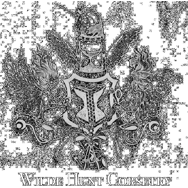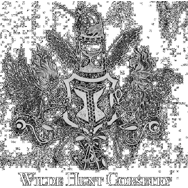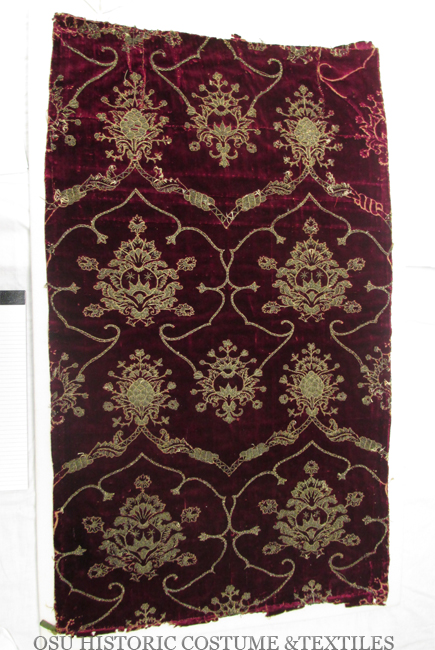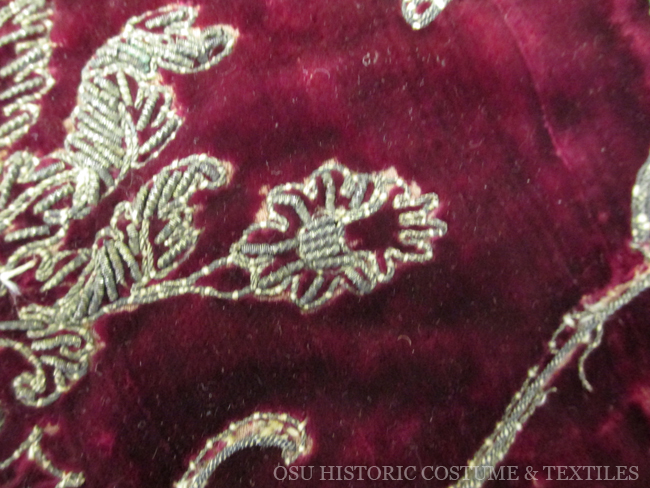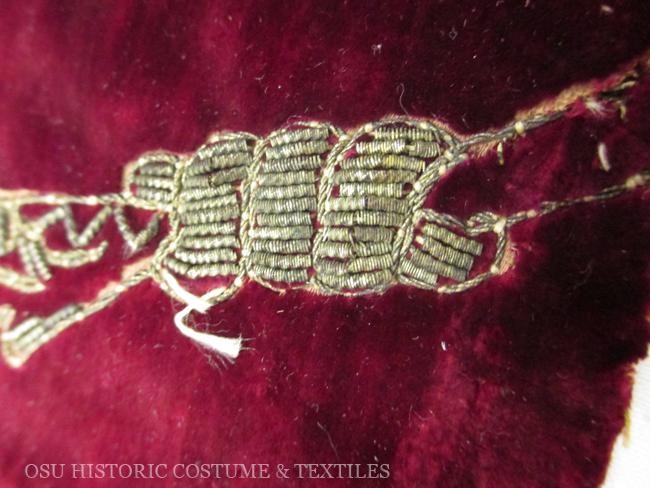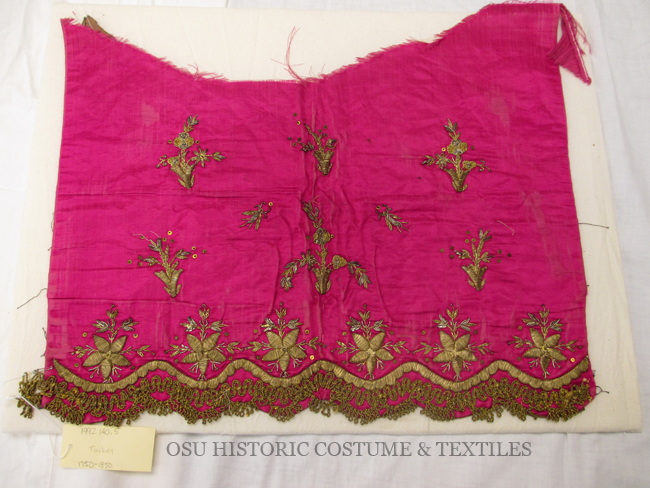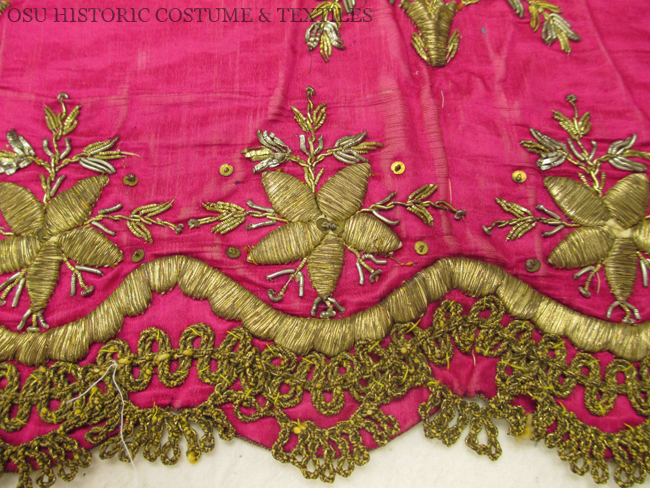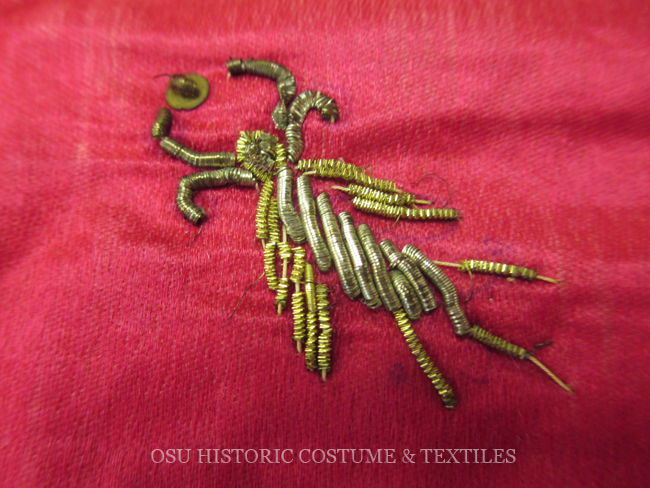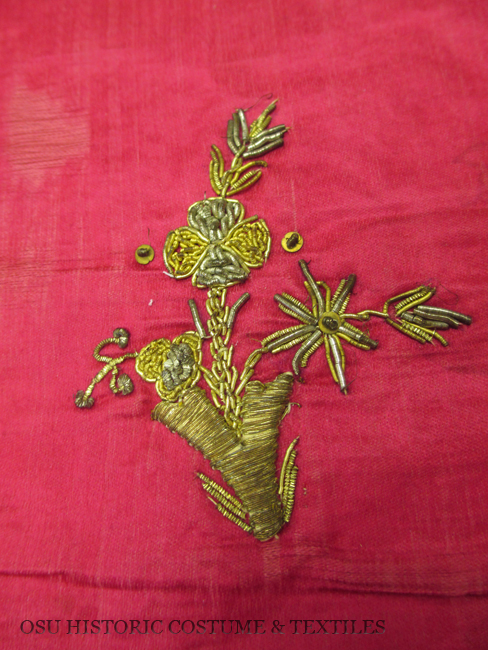Antique Textile Adventure – Part One: Embroidery
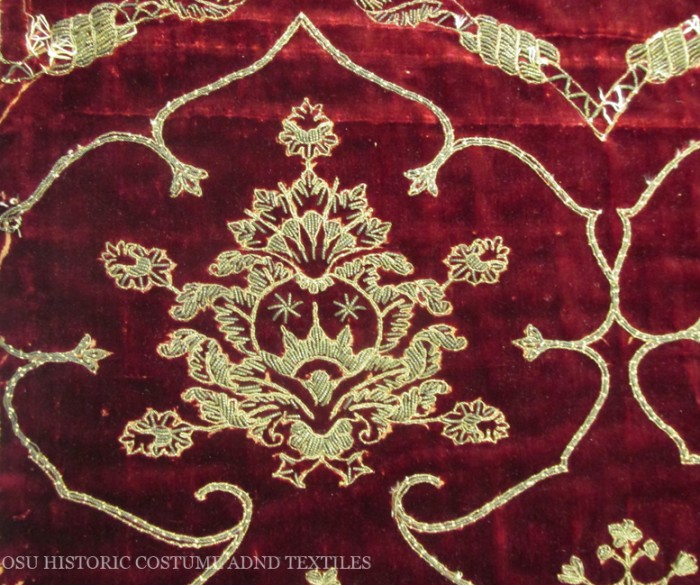
Last week I was permitted the unique opportunity to go back to my alma mater and spend the day studying antique corsets, gowns, and embroidered textiles at The Ohio State University Historic Costume and Textiles Collection. Because wonderful things deserve to shared, I asked my dear friend Roxanne McGovern of 3Graces Jewelry to come along with me to my appointment to view the items I had requested. I know many of you who follow my blog also have a lot of interest in antique textiles, so I decided to write about my experience in order that all of you could enjoy the beautiful garments as well. I saw and photographed quite a few items, so I will probably split up the experience into several blog posts for ease of reading.
Part of what made the experience so much fun was meeting curator Gayle Strege, assistant curator Marlise Schoeny, and professor Trish Cunningham. It was wonderful to talk to them about the history of the collection and their work and enthusiasm for historic textiles and preservation. They were so kind and accommodating of my research. Thank you very much, ladies! It truly was a pleasure.
The first item I examined was a fragment of red velvet thought to be from Spain circa 1400-1510, with gorgeous goldwork embroidery. It utilized smooth and checked bouillion (also known as bullion or purl, in England) as well as a unique woven gold passing thread which I’ve never seen before. It was fairly thick compared to the modern passing threads available today, measuring nearly 2mm.
Rox and I both loved the daffodil motif. I think she had a strong appreciation of the work involved in creating a piece like this because I had recently taught her some beginning goldwork and silk embroidery. In our lessons, I believe it took us 4 hours to densely embroider a small area of approximately 3″x3″. It gives one a good idea of the time involved to create an embroidered textile of this size. If you’d like to recreate this sort of work or something similar, you may be interested in taking the class I will be teaching at the Columbus College of Art and Design this summer.
Next I chose to examine a fragment of Turkish gold embroidery on an incredibly vibrant pink silk fabric. The record stated that it dated to between 1750-1850.
It was also noted that it was a donation from the Vicomtesse Harriet de Rosiere. Here is a photo of her from 1957. How gorgeous and editorial is this photo?!?! She reminds me of the character of Betty Draper from Mad Men.
This textile was also richly embroidered in bouillion (or purl). It was difficult to be sure, due to this embroidery’s considerable age, but it appeared as if the bouillion used was both gold and silver in color. Metals spangles were also used as accents in this embroidery and extensive padding was utilized to raise up the satin stitched designs of the flower petals and the scalloped border near the bottom.
I found the bouillion bee design to be particularly charming.
This style of embroidery is frequently found in Turkish wedding dresses, as seen here in this poignant story about a woman who was reunited with the spectacular Turkish dress she wore the last time she saw her family, during the Holocaust. I think it’s profoundly moving how clothes play such an important role and can trigger the memory of a significant time our lives. Do you have any pieces of clothing that hold special meaning to you? Feel free to share your stories below…
